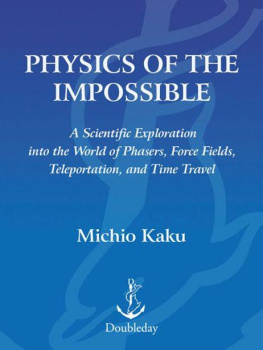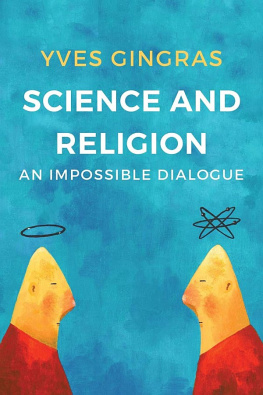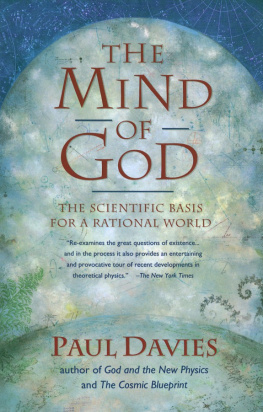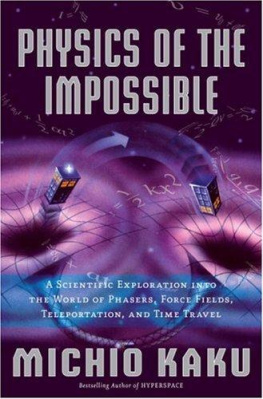Thank you for downloading this Simon & Schuster ebook.
Get a FREE ebook when you join our mailing list. Plus, get updates on new releases, deals, recommended reads, and more from Simon & Schuster. Click below to sign up and see terms and conditions.
CLICK HERE TO SIGN UP
Already a subscriber? Provide your email again so we can register this ebook and send you more of what you like to read. You will continue to receive exclusive offers in your inbox.
We hope you enjoyed reading this Simon & Schuster ebook.
Get a FREE ebook when you join our mailing list. Plus, get updates on new releases, deals, recommended reads, and more from Simon & Schuster. Click below to sign up and see terms and conditions.
CLICK HERE TO SIGN UP
Already a subscriber? Provide your email again so we can register this ebook and send you more of what you like to read. You will continue to receive exclusive offers in your inbox.
ALSO BY PAUL J. STEINHARDT
Endless Universe: Beyond the Big Bang (with Neil Turok)

Simon & Schuster
1230 Avenue of the Americas
New York, NY 10020
www.SimonandSchuster.com
Copyright 2019 by Paul J. Steinhardt
For image credits, see 373.
All rights reserved, including the right to reproduce this book or portions thereof in any form whatsoever. For information address Simon & Schuster Subsidiary Rights Department, 1230 Avenue of the Americas, New York, NY 10020.
First Simon & Schuster hardcover edition January 2019
SIMON & SCHUSTER and colophon are registered trademarks of Simon & Schuster, Inc.
For information about special discounts for bulk purchases, please contact Simon & Schuster Special Sales at 1-866-506-1949 or .
The Simon & Schuster Speakers Bureau can bring authors to your live event. For more information or to book an event contact the Simon & Schuster Speakers Bureau at 1-866-248-3049 or visit our website at www.simonspeakers.com.
Interior design by Ruth Lee-Mui
Maps by Paul J. Pugliese
Jacket design by Thomas Colligan
Jacket photograph by George Baier Photography
Library of Congress Cataloging-in-Publication Data is available.
ISBN 978-1-4767-2992-3
ISBN 978-1-4767-2994-7 (ebook)
To the curious and fearless
who defy convention
risking ridicule and failure
to pursue their dreams of discovery
PREFACE
M IDDLE OF N OWHERE , K AMCHATKA P ENINSULA , J ULY 22, 2011: I held my breath as the blue behemoth lurched its way down the steep incline. It was my first day in the mad contraption, a weird-looking vehicle with what looked like a Russian army tank on bottom and a beat-up moving van on top.
To my amazement, our driver, Viktor, managed to make it all the way down the hill without toppling over. He hit the brakes, and our truck shuddered and shook to a halt at the edge of a riverbed. He turned off the ignition, and muttered a few words in Russian.
Viktor says this is a good place to stop, our translator announced.
I peered out the front window, but could not for the life of me see what was so good about it.
Climbing out of the cab, I stood atop the enormous tank treads to get a better view. It was a cool summer evening, approaching midnight. But it was still light out, a reminder of how far I was from home. The summer sky never gets very dark so close to the Arctic Circle. The earthy, pungent smell of decaying vegetation filled the air, the unmistakable smell of the Kamchatka tundra.
I jumped off the tank treads into the thick, spongy muck to stretch my legs when, suddenly, I was attacked from all sides. Millions and millions of ravenous mosquitoes were springing up from the muck, drawn to the carbon dioxide I was exhaling. I swiped frantically with my arms and turned this way and that to escape them. Nothing helped. I had been warned about the tundra and its perils. Bears, insect swarms, unpredictable storms, endless miles of muddy swells and ruts. But these werent just stories anymore. This had become all too real.
My critics were right, I realized. I had no business leading this expedition. I was neither a geologist nor an outdoorsman. I was a theoretical physicist who belonged back home in Princeton. I should be working on calculations, with notebook in hand, not trying to lead a team of Russian, Italian, and American scientists on what was probably a hopeless quest in search of a rare mineral that had traveled billions of years through space.
How could this have happened? I asked, as I struggled against the ever-growing swarm. Unfortunately, I knew the answer: The crazy expedition had been my idea, the fulfillment of a scientific fantasy that had been occupying my mind for nearly three decades. The seed was planted in the early 1980s when my student and I developed a theory showing how to create novel forms of matter long thought to be impossible, atomic formations explicitly forbidden by venerable scientific principles.
I had learned early on to pay close attention whenever an idea is dismissed as impossible. Most of the time, scientists are referring to something that is truly out of the question, like violating the conservation of energy or creating a perpetual motion machine. It never makes sense to pursue those kinds of ideas. But sometimes, an idea is judged to be impossible based on assumptions that could be violated under certain circumstances that have never been considered before. I call that the second kind of impossible.
If one can expose the underlying assumptions and find a long-overlooked loophole, the second kind of impossible is a potential gold mine that can offer a scientist the rare opportunity, perhaps a once-in-a-lifetime opportunity, to make a transformational discovery.
In the early 1980s, my student and I discovered a scientific loophole in one of the most well-established laws of science and, exploiting that, realized it was possible to create new forms of matter. In a remarkable coincidence, just as our theory was being developed, an example of the material was accidentally discovered in a nearby laboratory. And soon, a new field of science was born.
But there was one question that kept bothering me: Why hadnt this discovery been made long ago? Surely nature had made these forms of matter thousands, or millions, or perhaps even billions of years before we had dreamed them up. I could not stop myself from wondering where the natural versions of our material were being hidden and what secrets they might hold.
I did not realize at the time that this question would lead me down the road to Kamchatka, an almost thirty-year-long detective story with a dizzying array of improbable twists and turns along the way. So many seemingly insurmountable barriers had to be conquered that it sometimes felt like an unseen force was guiding me and my team step by step toward this exotic land. Our entire investigation had been so... impossible.
Now we were in the middle of nowhere, with everything we had achieved up to this point at risk. Success would depend on whether we were lucky enough and skillful enough to conquer all of the unexpected obstacles, some of them terrifying, that we were about to confront.
PART I
MAKING THE IMPOSSIBLE POSSIBLE
ONE
IMPOSSIBLE!
P ASADENA , C ALIFORNIA , 1985: Impossible!
The word resonated throughout the large lecture hall. I had just finished describing a revolutionary concept for a new type of matter that my graduate student, Dov Levine, and I had invented.
Next page









